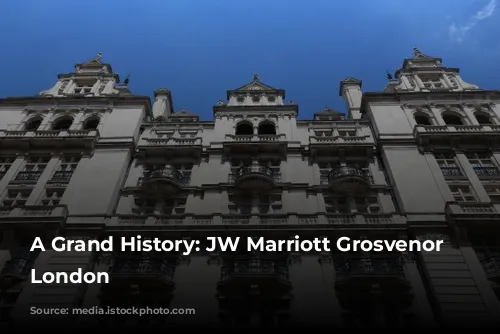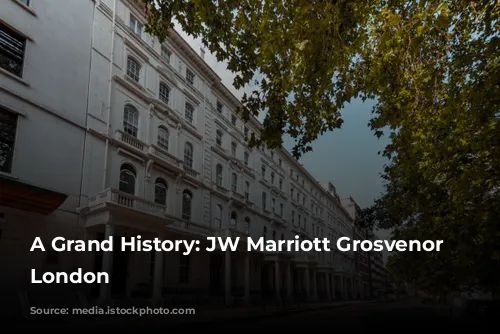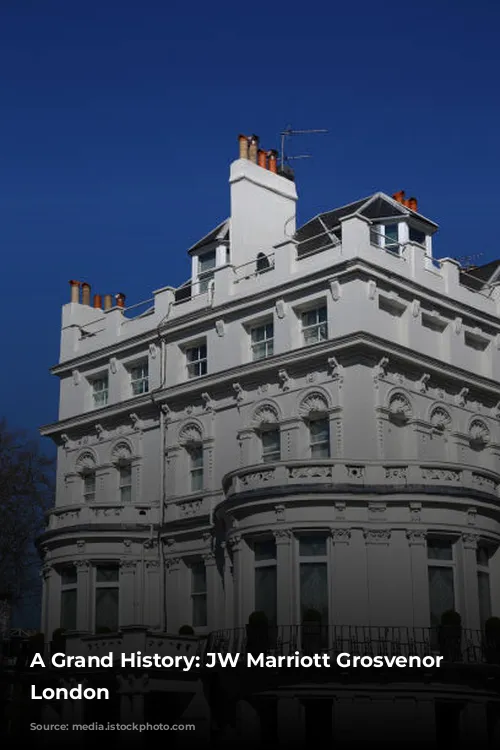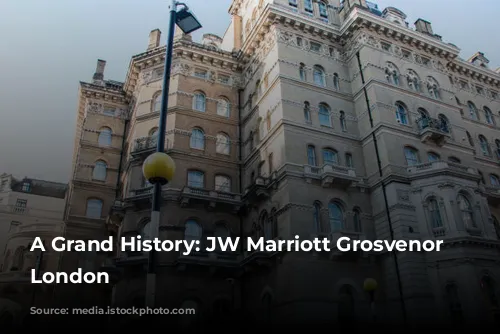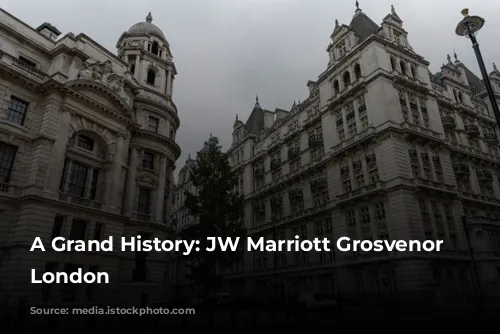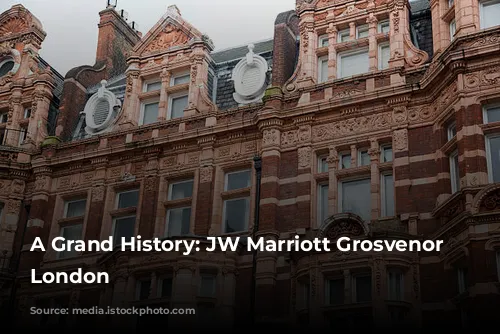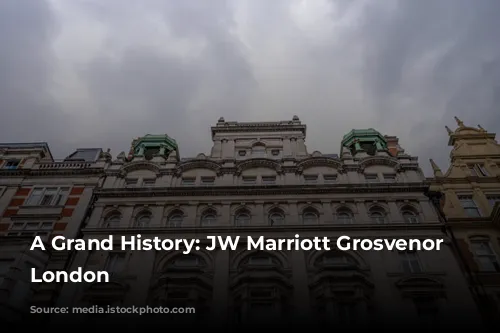JW Marriott Grosvenor House London, a luxurious haven in the heart of Mayfair, boasts a rich history dating back to the roaring twenties. The hotel stands proudly on the former grounds of Grosvenor House, the 19th century residence of the Dukes of Westminster. This iconic landmark, managed by JW Marriott Hotels and owned by Katara Hospitality, has witnessed decades of change and remains a beacon of elegance.
From Humble Beginnings to a Luxury Icon
The Grosvenor House Hotel first graced London’s landscape in 1929, the brainchild of visionary entrepreneur Arthur Octavius Edwards. This visionary hotelier, who served as chairman for a decade, meticulously crafted the hotel, drawing inspiration from the opulent past of its site. The hotel was built on the foundation of Grosvenor House, the once-grand home of the Dukes of Westminster. This legacy of opulence would define the hotel’s character for years to come.
The hotel’s early years were marked by a unique blend of grand vision and meticulous management. A.H. Jones, a former associate of Edwards, joined the team as accountant in 1929. He ascended to the position of general manager in 1936, his leadership guiding the hotel through the turbulent years of World War II.
A Wartime Refuge and a Resurgence
Despite the challenges of World War II, Grosvenor House emerged as a haven, providing solace to those seeking refuge. The hotel’s expansive spaces became a vital part of the war effort, transforming into a Sunday Club for officers and, in 1943, a mess for American officers. The hotel’s walls witnessed history unfold as Generals Dwight D. Eisenhower and George S. Patton walked its halls, adding to its already rich tapestry.
The post-war period brought about a renewal of grandeur. The hotel expanded in 1957, incorporating a new 92-bedroom extension, further solidifying its place as a leading hotel in the city. The 1950s saw the completion of the original design vision, a testament to the dedication of Edwards and his team.
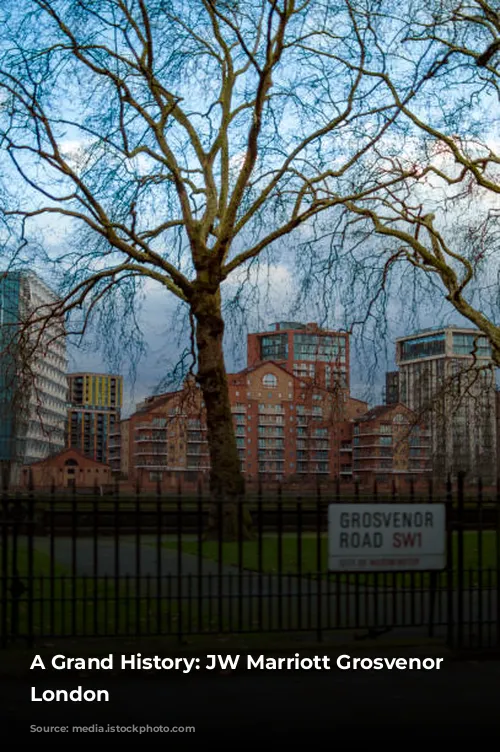
A Legacy of Modern Luxury
The hotel underwent a magnificent transformation in 2008, culminating in a £142 million renovation. This extensive project breathed new life into Grosvenor House, restoring its original elegance while embracing contemporary luxury. The refurbishment encompassed restaurants, guest rooms, health facilities, and public areas, elevating the hotel to a new level of sophistication. The hotel’s capacity to accommodate over 6,000 people, thanks to its Great Room, Ballroom, Court Suite, restaurants, bars, meeting spaces, and 494 guest rooms, cemented its reputation as a premier venue for large-scale events.

A Shifting Ownership, A Constant Legacy
Grosvenor House has experienced a few changes in ownership over the years, each reflecting its enduring appeal. Sahara India Pariwar acquired the hotel in 2010, followed by its sale to Ashkenazy Acquisition Corporation in 2017. The hotel ultimately found its current owner in Katara Hospitality in 2018, a testament to its enduring status as a desirable property.
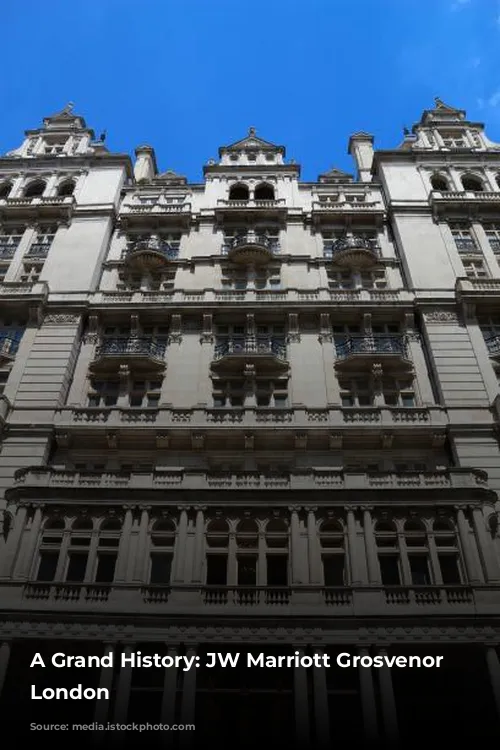
A Glimpse into the Past: A Legacy of Innovation
Grosvenor House played a significant role in shaping the modern hotel experience. The hotel’s innovative features, such as separate bathrooms and entrance lobbies for each bedroom, and running iced water in every bathroom, were a departure from the norm, setting a new standard for luxury.
The hotel’s dedication to providing unique experiences extended beyond its accommodations. It was home to the International Sportsmen’s Club, offering an array of leisure activities, including Turkish baths, a swimming pool, squash courts, and a gymnasium.
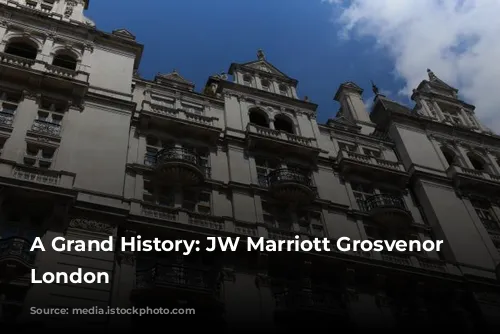
A Venue for Grand Occasions: The Great Room
The Great Room, a magnificent space distinct from the Ballroom, serves as a stage for prestigious events, from The Asian Awards and Pride of Britain Awards to charity balls and gala dinners. It has become a staple on British television, hosting events like the UK Chamber of Shipping’s annual maritime gala dinner.
The room’s storied past extends beyond its current function as a grand event space. Originally built as an ice rink, it was the site of the world’s oldest charitable ball, the Royal Caledonian Ball. This iconic space has hosted legendary skaters such as Sonja Henie and Cecilia Colledge, and even witnessed a young Princess Elizabeth, the future Queen Elizabeth II, learning to skate at just seven years old.
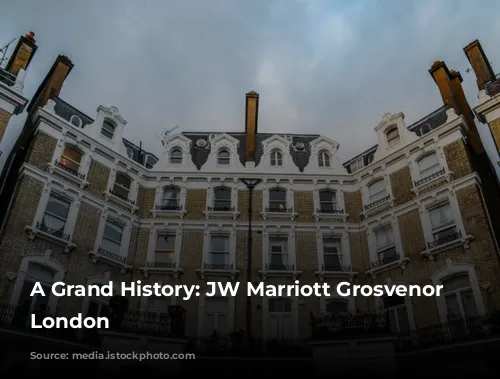
A Grand Legacy Continues
JW Marriott Grosvenor House London continues to be a symbol of elegance and sophistication, embodying a legacy of grandeur and innovation. From its humble beginnings as a grand residence to its present status as a world-renowned hotel, it stands as a testament to the enduring power of vision and meticulous craftsmanship. Its future remains as bright as its past, promising to continue captivating guests with its timeless charm and unwavering dedication to excellence.
